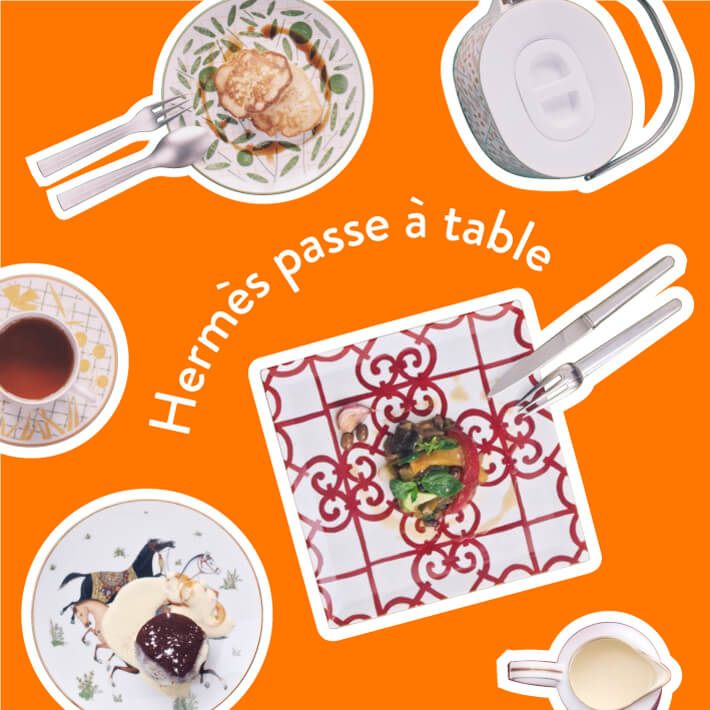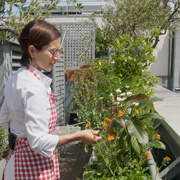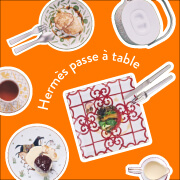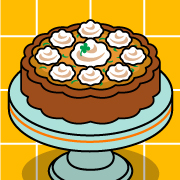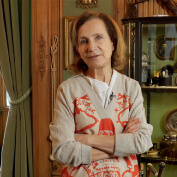Watch the video
STORY
The chef at the Fourbourg
Élisabeth
Larquetoux-Thiry
Chef to Hermès
This month’s theme is “gourmand”. Did you know there is a chef at the Hermès store on Rue du Faubourg-Saint Honoré who prepares dishes designed to delight the palates of even the fussiest eater? Élisabeth Larquetoux-Thiry goes into detail about her daily duties.
Food that surprises
What it means to be a chef
I have been working at Hermès for almost 20 years, but every day I go into the kitchen and feel like it is my first day. Isn’t that strange? I prepare lunch and sometimes dinner for my Hermès family and their guests and serve them in a private space in the Paris Faubourg Saint Honoré store. The space is a nice, homely environment, so I usually serve home cooking. If the guests are from overseas, I will add a small taste of their national cuisine—tempura, for example. My job is to be considerate of where the guests are coming from and to provide meals that satisfy their palates.

A day in the life of a chef
I leave the house around 8 a.m. and visit Yebisu, a fishmonger specializing in wares from Brittany—my hometown. I love this shop; they bleed their fish right after catching them so they are very fresh. Then, I visit the markets. I go around on bicycle as I stock up on ingredients—about half plant-based and half animal-based. My bicycle has a basket on the front, and I hang two satchels on the back, so I can load up on quite a few ingredients.
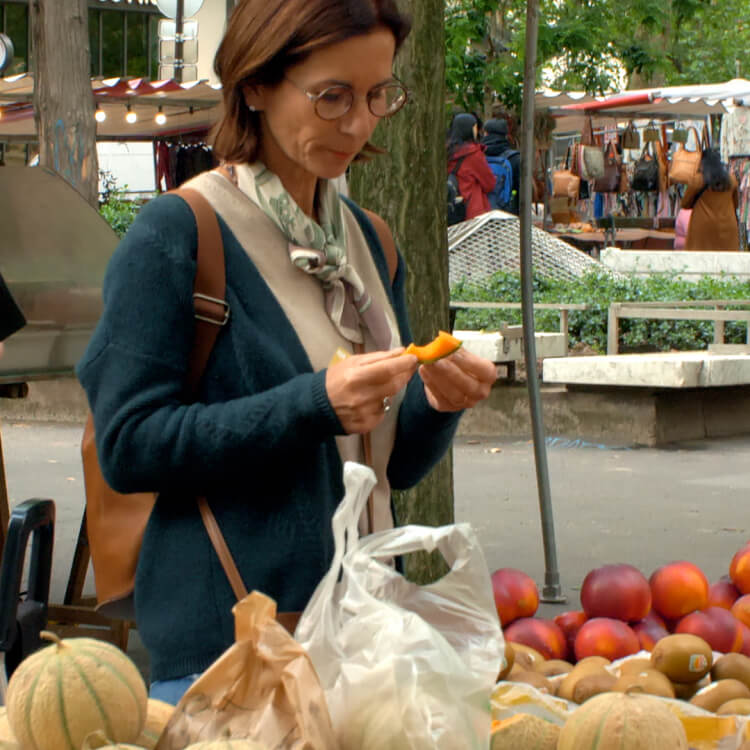
Designing the menu
Once I have my ingredients, I go to the store and greet my right-hand woman, Suzana. I plan out the menus for the day while I’m buying my ingredients, so I immediately lay out all the ingredients and explain the menu to my staff. Rita, another member of my staff, chooses the dishware, glasses, and everything else needed for the table settings. Once the meal is ready, I serve it along with some wine if there is any. In the afternoon, we prepare the next day’s desserts; some dishes need to set for 24 hours in advance.
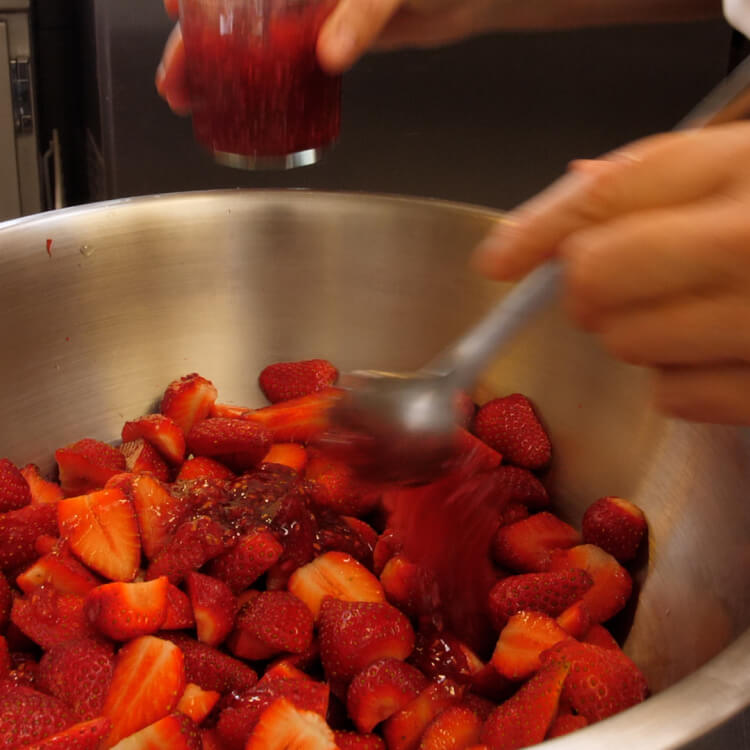
The purpose of cooking
One goal of cooking is to create joy. It is a wonderful feeling to provide food that is both healthy and joyful for the diner to consume. Balance is of course important, but to produce joy, you need an element of surprise—something unexpectedly delightful that happens when you first taste that raspberry or that leaf of basil. With any cooking, it is important to constantly create moments of surprise.
Releasing your inner chef
I love sharing my recipes. When trying my recipes, I hope you will remember to think like a chef—and I believe a chef exists inside every one of us.
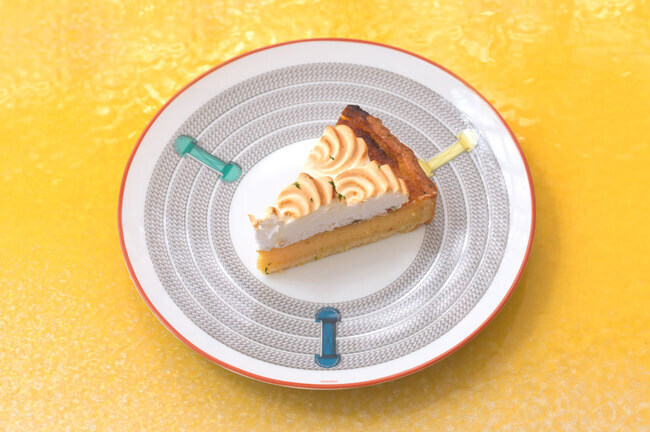
Let’s say there is an ice cream recipe that requires the use of fig leaves. If you cannot get a hold of fig leaves, do not think, “Oh no, I can’t make this recipe.” Make things simple for yourself by thinking about what common ingredients might work instead—maybe some fennel stalks or mint leaves. Your inner chef will come to life and create an original ice cream that you yourself came up with.
Flavour
Flavour is important, but so is your palate. If your palate becomes bored after the third bite, you might subconsciously begin to think that the recipe isn’t all that great. I try to keep the palate engaged by adding a variety of textures—crispiness, creaminess, and a subtle softness—as well as by mixing hot and cold and making sure that you can enjoy all the different flavours—sweet, salty, sour, and bitter, and also the ingredient’s natural sweetness. By combining elements of each of these three groups a little at a time, you can produce a solid foundation of flavour.
Presentation
Making the food look beautiful is an important part of being a chef. Food that has been presented on a beautiful piece of dishware can whet one’s appetite. The Passifolia presentation plates from Hermès are decorated with floral motifs. If you are adding a sauce, keep the presentation simple. By contrast, the Soleil d’Hermès dinner plates feature beautiful yellow patterns that go very well with colourful dishes, and which impart subtle yellow hues to any dish featuring different shades of white.
Sukiyaki
I love the culture and orderliness of Japan. Shall I tell you a little secret? I won my husband’s heart with a superb sukiyaki. He just could not forget the taste of that meal. And now, we have been happily married for 30 years.
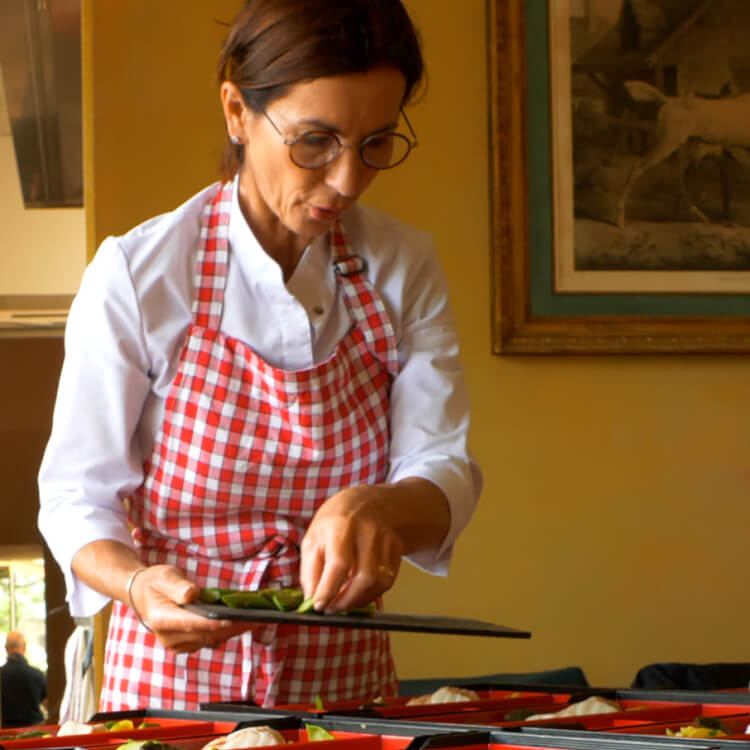
Cooking: a kind of magic
After beginning work at Hermès, I started looking for collaborators. One I found is a Japanese gentleman who I first spotted at a market. He was quietly going around buying vegetables, and everyone there seemed to know him. I became intrigued and began chatting with him. We had one, two, then three cups of coffee, and since then, we’ve been working together for 10 years. He is Taira Kurihara, a chef who introduced me to many techniques I did not know. Taira tastes and smells his ingredients and then prepares them in ways that are completely different from mine. As a result, we were both able to learn that completely different dishes can arise from the same ingredients and seasonings. It’s like real-life magic.
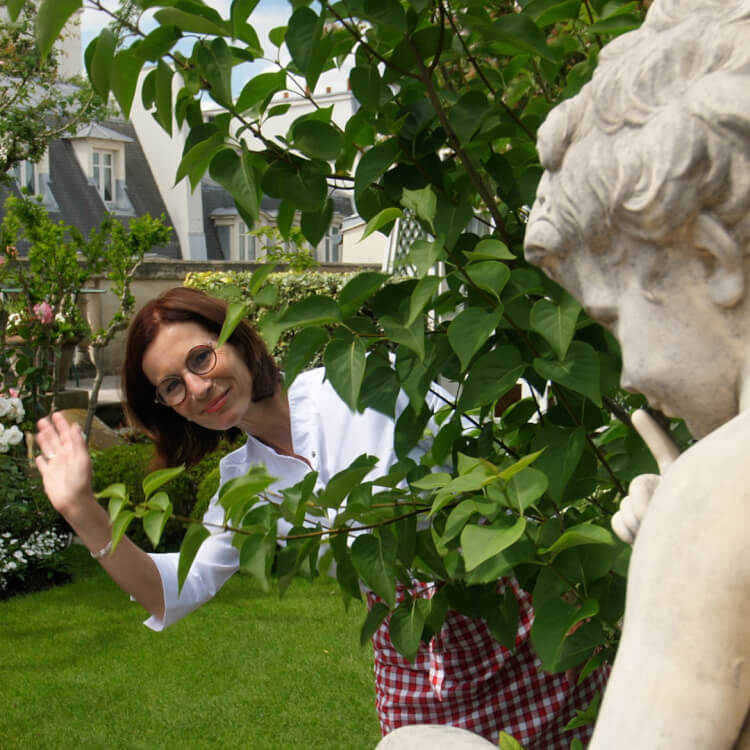

Élisabeth
Larquetoux-Thiry
Larquetoux-Thiry is a chef who works for Hermès. She was born into a culinary family in Paris and has opened two restaurants on Breton Island, where her grandmother is from. She began her current stint in 2004.

